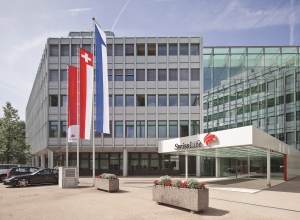Swiss Life: Last hurrah
Swiss Life on 8 June hit a short issuance window to sell a Eu750m perpetual non-call 10 hybrid on the back of a twice oversubscribed order book before conditions again deteriorated and insurance sub debt issuance dried up. Here, Luca Pescatore, head of capital management at Swiss Life, discusses the background to the transaction and its execution.
What was the rationale for your transaction and for the timing?
Luca Pescatore, Swiss Life: We have an outstanding hybrid bond that is callable in November of this year; the main goal of the new transaction was to refinance this instrument. Due to the positive feedback from the roadshow and the room for additional hybrid we have within our capital structure, we went for a larger size — with that we also further optimised our capital structure.
Were there any particular messages about Swiss Life and your strategy that you emphasised on your roadshow? What was the response from investors?
Pescatore: Yes, there are certain points that we emphasised. One is that the company has been successfully improving the resilience of its business model in the past years, which is particularly important in the current environment that is challenging for life insurers, with very low interest rates.
On one hand we managed to keep a fairly stable investment result despite interest rates that have strongly decreased.
On the other hand we worked on the liability side, reducing the average guaranteed technical interest rates. We did that, for instance, through strengthening the reserves and through improvements to the business mix.
This has had the effect of securing, in this challenging environment, our already strong interest rate margin, i.e. the difference between the investment result and the guaranteed technical interest rates. This message was very well received.
How does the hybrid fit in with your target capital structure?
Pescatore: We have a target capital structure comprising 70%-75% equity (excluding unrealised gains or losses from bonds), 25% hybrid and 0%-5% senior. That target is calibrated to be in line with, for instance, our leverage ratio target and our fixed charge coverage target, which are important from a ratings perspective. At the end of 2014 the share of hybrids was 21%, which is below the 25% target share we have, so the new transaction fits very well into the capital structure.
And it also fits very well into our maturity profile, because we didn’t have any call dates in 2025.
Did any other considerations play into the maturity structure?
Pescatore: We know that in euros currently the spread difference between perpetual and dated is relatively small. But the main rationale why we decided to issue in a perpetual format is that we wanted to keep the quality of capital unchanged, and the instrument we plan to call in November is also perpetual.
It also reflects a particularity of the Swiss regulatory framework, in which we have two hybrid buckets, “upper additional capital” and “lower additional capital”, and the main difference between the two is perpetual versus dated, so this perpetual instrument fits in the upper additional capital bucket.
Regarding the call date after 10 years, as mentioned earlier, that is because it fits well in our capital structure. And 10 years allows you to be compliant with all the various regulatory and rating frameworks.
Besides the fact that it is a perpetual, it is really a Solvency II Tier 2 structure, which investors are already familiar with.
Markets have been very volatile. Did this backdrop affect the timing or execution of the transaction?
Pescatore: You are right, the market has been volatile, but to say we were concerned is overstating it. We were able to use this short issuance window in the week following our roadshow. In spite of the volatility we managed to issue what was the maximum amount we considered, and I would say this is a sign that investors have confidence in our credit.
One more thing that I think really helped us is that just two weeks before the transaction Standard & Poor’s upgraded the firm’s rating by one notch from A- to A. That was also very well received by investors — seeing a life insurance company get upgraded in this environment was a signal of the soundness of Swiss Life.
How did you feel the pricing worked out?
Pescatore: I think it worked out well. Again, the issuance window was very short, and already the day after we issued the markets started getting tougher, with widening credit spreads, so I think we issued with the right pricing.
Were you happy with the quality of the order book?
Pescatore: Yes, especially because it was well diversified. What we saw, which I thought was interesting, was strong support from Swiss investors, stronger than is usual in euro deals. They were second in geographical terms in the order book after the UK. That was particularly notable in this transaction and I think this shows that the name Swiss Life is strong in the domestic market.
Interest rates are extremely volatile. To what extent does this affect your capital requirement and planning?
Pescatore: We have for many years already had a very disciplined asset-liability management, and for many years we have had a duration gap that is under 1%. This of course helps us to reduce interest rate sensitivity in economic terms. So from that point of view I would say our disciplined asset-liability management is really one of our strengths.
Do you have any similar transactions earmarked for the rest of this year or 2016?
Pescatore: As you can imagine, I cannot comment much on future refinancing plans. However, if you look at our maturity profile you will see that we have our following optional call date in October 2016, which is a Swiss franc hybrid bond placed mainly with retail investors.

